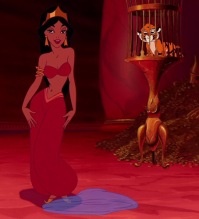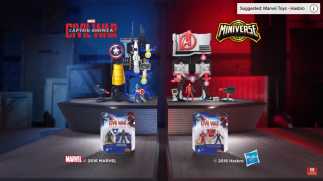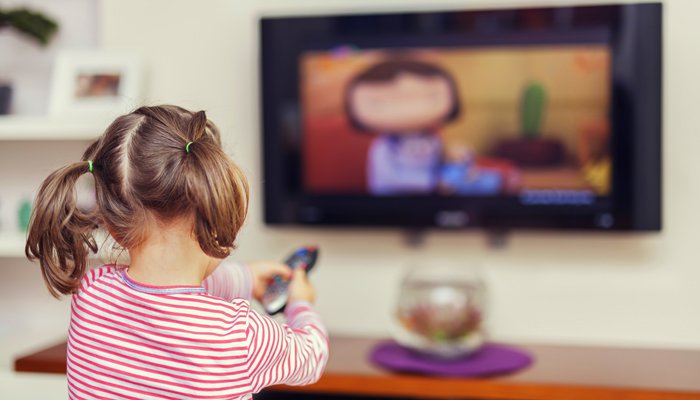We tend to associate anything related to children with innocence. From the scribbled paintings hanged on the refrigerators to the colorful books filled with strange phrases, they all seem so innocent. However, we tend to forget the importance children’s media, anything that can range from 30 second commercials to an hour-long movie. For the most part, we underestimate the impact it leaves on children, believing that it provides nothing but entertainment, with no benefit or harm to it, and unfortunately, we couldn’t be further from the truth. Media has a bigger impact on children than we like to believe , movies and commercials disguise themes and messages with big action sequences and magical music, nonetheless, children get highly influenced by what they see.
One of the biggest companies to produce children’s movies is Disney. Disney likes to promote itself as a family friendly brand, however, there are multiple instances when the company faced harsh criticism over their movies, Aladdin happens to be one of those incidents. At first glance, the movie seems harmless, it’s a movie about a young boy who goes from stealing food from vendors to becoming a prince and marrying his beloved princess. However, upon close inspection, the movie is filled with stereotypical Arab behavior and the misogynistic treatment of women. The villains are easy to identify, with their big noses, brown skin, and foreign accents. They are shown to be barbaric and violent. Our heroes, on the other hand, have white skin and a proper American accent. This portrayal causes children to believe that white people are above all other races. Yousef Salem, a former spokesperson for the South Bay Islamic association, said:” …I have a daughter that’s ashamed to call herself Arab”. (Giroux,Animating Youth: the Disnification of Children’s Culture)

Hodgson, Alysa N. “Posts about Aladdin on Disney’s (Intersectional) Feminist Diadem.”Disney’s (Intersectional) Feminist Diadem, feministdiadem.wordpress.com/tag/aladdin/.
The impact of such portrayals should not go without consequence. It’s not only the portrayal of characters that put Disney under fire, it was also the opening song: “Arabian Nights”. The song insinuates that Arab people are violent, with one phrase say:” they cut your ear if they don’t like your face”. While Disney did agree to alter the offensive song ; they still left the phrase: “Its barbaric but it’s still home” was not removed. At a young age, children are indirectly programmed to believe all the stereotypes, they grow up believing in such notions due to the movies’ portrayal. (Giroux,Animating Youth: the Disnification of Children’s Culture)
Furthermore, the movie pushes the notion of women being nothing but prizes to be granted for the hero when he finishes his mission. Jasmine for the most part spends her time with Aladdin or between the hands of the villain. One particular cause of controversy, was a scene where Jasmine is portrayed as a “sexual object”. the scene was criticized by Arabs for it’s sexualization of a traditional outfit worn by many Arab women. Furthermore, the outfit served the purpose of “seduction”, the entire scene revolves around Jafaar degrading Jasmine, and treating her like an object. Even when her escape was underway, the only role she played was seducing Jafaar as to distract him. She is mostly seen as spoiled and prejudiced princess with no actual traits or personality. This does not go unnoticed with children; a lot of young girls grow up believing their self-worth is based on whether they can get the prince at the end. (Nelson, Alyssa. “4 Aladdin.” )

Bhanji, Alia. “Sexualisation of Brown Disney Princesses.” RUDE GYAL, 16 May 2017, rudegyals.com/main//sexualisation-of-brown-disney-princesses.
It’s no surprise that Disney received backlash from psychologists and Arabs alike. However, Disney has began changing the message the movies convey, and making them more family friendly in recent movies such as Up and Inside Out.
Companies spend millions of dollars to promote movies and shows. Whether it be actions figures, toys, or even socks, companies go out of their way to promote their movie in any possible way. For example, Disney released a commercial for their newly release Captain America : Civil War, a movie targeted towards the older generation. Advertisements targeted towards children often come with a lot of disadvantages.

Screenshot from “Marvel’s Captain America: Civil War Playsets ” Commerical
To begin with, those advertisements attract children to buy the product and slowly put them on their path to becoming lifelong consumers. Research shows that children are highly effected by the advertisements they see, the exposure at such a young age causes them to become lifelong consumers of such products, causing the company to gain more and more revenue. The Marvel movie universe is very extensive, with multiple movies coming out each year. Those advertisements guarantee that the young consumers will always be willing to watch the movies as they grow older. The second underlying disadvantage is the promotion of a PG-13 movie to young children. Companies want to ensure that their movies are an instant hit to the box office, as a result they try and advertise to every social group. Children will see the advertisement, buy the action figures, and relentlessly beg their parents to watch the movie. However, they fail to realize the harm that comes when a child watches a movie packed with violent and action scenes. Exposing children to such grottoes scenes at such a young age makes them more prone to becoming violent over the years. (Giroux, Henry A. “How Disney Magic and the Corporate Media Shape Youth Identity in the Digital Age.)
We trust the media with our children, we trust them to teach our children positive morals. The harsh truth is; the media does it’s best to imprint negative behavior on our children, whether it be through the cinema screen or through a toy set. Fortunately, parents are starting to grow more aware of the phenomenon, hopefully putting it to end soon. The next time you watch a movie or commercial, ask your self: What is the real message here?
Work Citied
Giroux, Henry A. “Animating Youth: the Disnification of Children’s Culture.” Dr.Henry A. Giroux-Online Articles, 1995, http://www.henryagiroux.com/online_articles/animating_youth.htm.
Nelson, Alyssa. “4 Aladdin.” Disney Movies and Racism / 4 Aladdin, disneyandmovies.pbworks.com/w/page/17905678/4%20Aladdin.
Giroux, Henry A. “How Disney Magic and the Corporate Media Shape Youth Identity in the Digital Age.” Truthout, 21 Aug. 2011, http://www.truth-out.org/opinion/item/2808:how-disney-magic-and-the-corporate-media-shape-youth-identity-in-the-digital-age.
